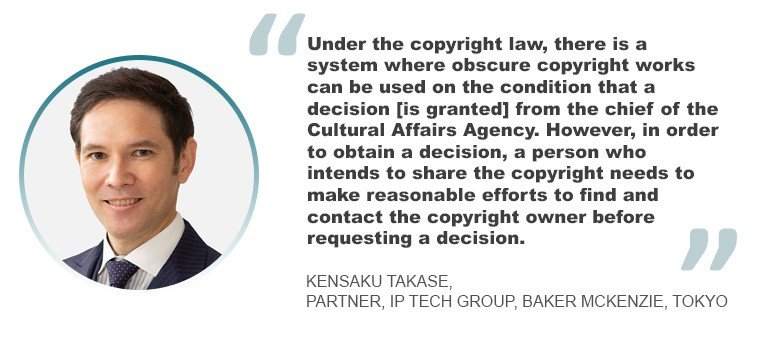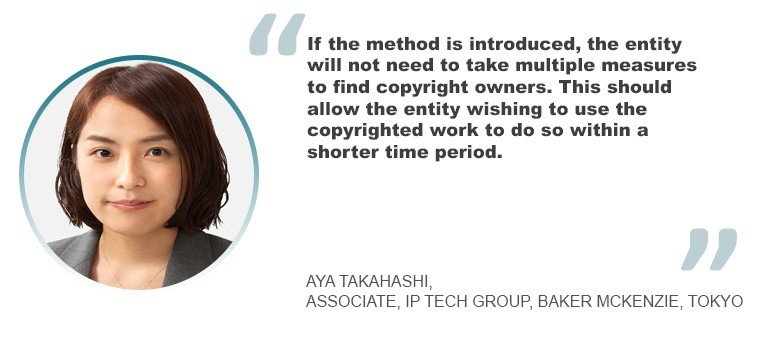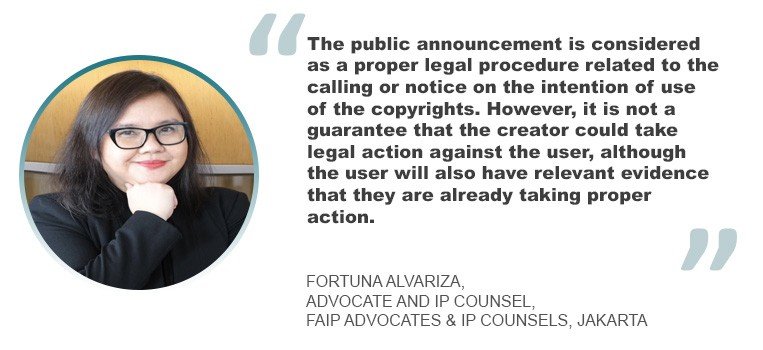Indonesia and the state of copyright
Meanwhile, according to Indonesian copyright law, when the creator of a work is unknown, and the work has not been published – a manuscript that has never been made in a form of a book and launched, for example – then the copyright of the work will be held by the state for the benefit of the creator or owner. If the work of the unknown creator has been published or listed as only an alias or pseudonym of the creator, the copyright to the work will be held by the party who makes the publication for the interest of the creator. Further, if the work has been published but both the creator and party who published it are unknown, the copyright will be held by the state for the interest of the creator or owner. The aforementioned interest of the copyright’s owner or holder by the state is executed by the Ministry of Law and Human Rights.
“However, there is no further technical regulation on how the State will hold the copyrights for the interest of the creator or holder, or how the procedure to ask the permission to the State to use a work which the copyrights owner is unknown,” says Fortuna Alvariza, an advocate and IP counsel at FAIP Advocates & IP Counsels In Jakarta. “If the work is a song, or some part of a song, the party may communicate with the National Collective Management Agency (LMKN) for the royalty that must be paid to the unknown creator or copyrights holder. The LMKN will keep the payment to the unknown song composer or copyright holder within two years. After two years, the payment will be kept in the reserve of the LMKN.”
She adds: “However, for other works, there is no further regulation concerning the procedure on how to use the work if we do not know who the owner of the work is or who the copyrights holder of the work. Due to loopholes in the implementing regulation and technical procedure, based on legal practice in Indonesia, the party who would like to use a work for commercial purposes may publish their intention in a public notice in nationwide journals and newspapers and other means of media publication, and calling the composer and/or copyrights owner of the work to contact them. This public notice is usually announced twice in order to make sure that the announcement is widely spread in the territory. If within 14 days after the last announcement, no one has appeared to claim ownership of the work, the work can be used. It is recommended to put a note with the message to the creator or copyrights owner to contact them if they would like to claim their ownership and royalty from the use of the work. This procedure has been practiced by some parties who would like to use a work with obscure copyrights.”
“The practice of such public notice is allowed under various regulations in Indonesia, especially as a proper standard legal procedure to call the party to appear before the Court to attend legal hearing,” she says. “However, the weakness of this system is that public announcements in nationwide newspapers and journals are very costly.”
She adds that the use of obscure copyrights may also be considered as a timebomb, since they do not know when or who will suddenly come and claim the works as the truly creator or copyrights holder, and whether they will take legal action on the commercial use by the user due to the lack of permission despite of the fact that the creator or copyrights holder was considered as unknown.
“The public announcement is considered as a proper legal procedure related to the calling or notice on the intention of use of the copyrights,” she says. “However, it is not a guarantee that the creator or copyrights holder, if suddenly appeared, could take legal action against the user, although the user will also have relevant evidence that they are already taking proper tracking action followed by taking legal procedure such as the public announcement in nationwide newspapers and journals, and other means of media.”
She adds: “Therefore, specific regulation regarding these obscure copyrights needs to be created, among others, regulating that the state or other institution appointed by the state may function for the permission of the use of obscure copyrights works, collect the royalty from the user, and give the royalty to the original creator and/or copyright holder if suddenly they appear and claim their rights with pertinent evidence. The role of the state or the appointed institution as the ‘middle body’ will be useful to avoid potential conflict and abuse of rights from the rights holder and/or original creator, as well as conducting the necessary steps to gain financial benefit for the copyright holder and/or original creator. With this solution, the user will not need to place public announcements in nationwide newspapers and journals, which is very costly.”
She hopes that one day, Indonesian copyright law will be amended, or, like in Japan, furnished with concrete implementing regulations with more details on the use of such obscure copyrights in order to simplify the exploration of the creation that may potentially bring profit and active production in creative economy industries of the country.
“I discussed with potential movie producers who would like to reproduce some old movies, but it is not easy to track the original creators or the copyrights holder as there are possibly multiple parties who may involve without knowing who actually the most relevant party to deal with,” she says. “On the other side, it is too risky to use the obscure copyrights work if there is no strong legal standing that will protect them to create and reproduce such old movies.”











